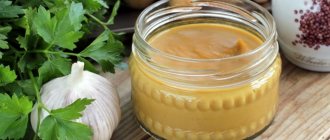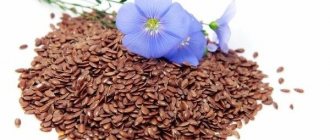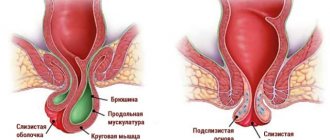Flatulence (from the Greek word meaning rising, bloating) is an excessive formation, accumulation of gases in the lumen of the digestive tract. A healthy person's gastrointestinal tract contains about 200 ml of gases. The gases include a mixture of hydrogen, methane, nitrogen, sulfur, and carbon monoxide.
Bloating is a common and unpleasant symptom that sometimes causes a person to suffer more than abdominal pain. Bloating is a subjective sensation of excess gas in the gastrointestinal tract; it is included in the medical concept of flatulence syndrome.
Causes of flatulence
Aerophagia
Normally, when eating food and liquid, or swallowing saliva, a small amount of air enters the stomach. But often there is increased swallowing and swallowing more air:
- when eating in a hurry (fast food),
- when talking while eating,
- smoking,
- drinking carbonated drinks,
- drinking through a straw,
- using chewing gum
- with poorly fitting dentures,
- some mental states (anxiety, hysterical psychoses).
Lack of enzymes in the gastrointestinal tract
The lack of enzymes leads to the fact that a large amount of undigested food debris ends up in the lower parts of the digestive tract. The processes of rotting and fermentation are activated there. During fermentation processes, sudden gas formation , bloating, rumbling, transfusion, and increased release of gases (carbon dioxide and methane) are observed. This is most often observed after eating plant foods, milk, and rye bread.
Putrefactive processes ( dyspepsia ) develop with excessive consumption of food proteins due to enhanced enzymatic digestion of them. Flatulence is less pronounced, but the gases released are more smelly due to hydrogen sulfide and ammonia.
In the formation of carbon dioxide, the level of hydrochloric acid in the stomach and the activity of pancreatic secretions, enzymatic deficiency (intolerance to lactose, fructose, wheat) are important.
A larger amount of gases is represented by intestinal gases (up to 75%). They are formed during the enzymatic activity of intestinal bacteria during the digestion of food components.
In the small intestine, small gas bubbles mix with food. Only 20% of gases are of bacterial origin.
In the colon, gases are 100% formed by bacteria, and due to the high density of the contents in the intestine, the processes of penetration of gases into the blood are disrupted. This creates conditions for the accumulation of large amounts of gases.
A healthy person can release from 0.5 to 1.5 liters of gases per day. The “food” for colon bacteria is digestible fiber - cellulose, hemicellulose, pectins, dietary fiber. Under normal conditions, large amounts of gases are absorbed by bacteria (aerobes), which also live in the large intestine. A violation of the ratio of bacteria that produce gas and bacteria that absorb it causes flatulence.
Gases produced by microflora are involved in the regulation of intestinal function, for example, methane helps slow down peristalsis and causes constipation, and carbon dioxide regulates the peristalsis of the colon, increasing peristalsis.
Malabsorption of food components
Bloating can be observed with increased gas formation in diseases in which the absorption of food components is impaired, in violation of the microbiome of the small and large intestines, gluten intolerance and lactase deficiency, and in the consumption of problematic foods that cause increased gas formation.
Impaired colon motility, constipation and increased sensitivity to stretching of the intestinal wall (visceral sensitivity in IBS and functional diseases) can interfere with the passage of gases and their retention in the intestinal lumen.
Abdominal bloating occurs occasionally in all people and is most often associated with dietary habits and the consumption of “problem” foods.
Harm, restrictions and contraindications
Dill is not a delicacy, so you don’t have to worry about someone consuming it excessively. This is what can cause harm. The plant is popular both as a seasoning and as a medicinal product, but there are some contraindications for use :
- Pregnancy (in case of overdose, depression or its worsening occurs).
- Menstruation (kaemferol does not allow the production of iron, anemia may occur, which is also harmful for pregnant women).
- Hypotension (25% of all substances is magnesium, which lowers blood pressure).
- Hemophilia or insufficient blood clotting (elements of dill help thin the blood).
- Cholelithiasis, the presence of kidney stones (choleretic and diuretic properties of dill can cause the movement of stones, which will bring suffering and undesirable consequences).
- Increased acidity with gastritis (when consuming fresh dill and tinctures from it, the formation of gastric juice increases).
- Intolerance.
Foods that cause flatulence
Products that most often cause increased gas formation:
- legumes of all types (white, red, brown), lentils of all types,
- all types of cabbage (white cabbage, broccoli, Brussels sprouts, kohlrabi, cauliflower),
- salads of all kinds,
- dairy products,
- onion,
- celery, parsley,
- garlic,
- asparagus,
- beets, carrots,
- bananas,
- raisin,
- grapes, apricots, plum juice, apples, plums,
- yeast bread (black, bagels, fresh bread, especially wholemeal bread), wheat germ,
- beer,
- nuts (pistachios and sesame),
- soybeans and soy products (tofu, soy milk).
These foods contain a lot of fermentable fructo-oligosaccharides - these are sugars that, when they enter the large intestine, begin to be intensively digested and form gases - wheat products, fruits rich in fructose (e.g. apples, pears), vegetables containing fructans (e.g. onions, asparagus ), products containing raffinose (e.g. legumes, beets), sorbitol (sugar-free chewing gum). Oats and potatoes can potentially cause flatulence because... rich in carbohydrates (sugars, starch).
The microbial composition of the intestine and peristalsis depend on the amount of polysaccharides consumed. Depending on the nature of the intestinal flora and the clinical picture of the disease, gas formation in the intestines is distinguished as fermentative, putrefactive and mixed.
All of them cause psychological discomfort and reduce a person’s quality of life.
Flatulence - clinical manifestations
Flatulence occurs at any age, is one of the most common complaints of patients, and is observed in 85% of patients with diseases of the gastrointestinal tract. Bloating may be seen in older and older adults as a symptom of anxiety. These patients should be examined with oncological suspicion, to exclude colon and ovarian cancer.
Bloating is a subjective feeling of fullness and distension of the abdomen, the appearance of hardness and tension in the anterior abdominal wall, excessive formation and discharge of gases, rumbling, and frequent belching.
Objective manifestations of bloating are:
- increase in abdominal circumference (patients often say: “I want to unfasten the belt at my waist”),
- loud rumbling
- loud belching
- uncontrolled release of foul-smelling gases.
Excessive (loud) belching is a violation of the motility of the upper gastrointestinal tract; there is an odorless belch or belching with regurgitation (bitter or sour belching). Often found in GERD, peptic ulcers, diseases of the biliary tract and gallbladder.
Belching may not be associated with the gastrointestinal tract, but may be determined by improper eating behavior, habits and mental factors.
With functional disorders, swelling and stretching are not constant, and differ in circadian rhythm. For most people, bloating occurs after eating, increases at the end of the day, and goes away overnight.
Principles of treatment
The treatment of flatulence is based on eliminating the cause of increased gas formation, treating the patient’s existing diseases of the digestive system, removing accumulated gases in the lumen of the gastrointestinal tract, and preventing their formation.
Diet and diet
It is recommended to eat frequently in small portions, eat slowly to prevent swallowing air, and chew food thoroughly. You should not talk while eating. You may need to reduce the amount of food you eat. When eating small portions of food, bloating is not observed, but large meals can cause bloating and distension of the abdomen. It is advisable to exclude products that cause increased gas formation, carbonated drinks.
Keeping a food diary
To establish the cause of flatulence for some time, it is advisable to keep a food diary, the nature of the sensations in the stomach from various foods.
Physical activity
Moderate physical activity improves gas transport and ensures bowel movements.
Probiotics
When studying individuals suffering from increased gas formation, fluctuations in the intestinal microflora and differences in the microbiome of healthy individuals and patients with bloating and the appearance of bacteroids are noted. Two probiotics have a positive effect - Bifidobacterium infantis and Lactobaccilus acidophilus. Research continues.
Drug treatment includes drugs:
- normalizing peristalsis and promoting the removal of gases from the intestines. These can be infusions of dill, fennel, caraway and prokinetics, accelerating the movement of gases through the intestines and their release,
- The drug Trimedat, a universal regulator of gastrointestinal motility, is currently presented on the Russian market. The drug stimulates gastric emptying, normalizes intestinal motility (constipation and diarrhea) and gas movement, reduces visceral sensitivity, reduces the feeling of bloating and discomfort in the abdomen, and relieves abdominal pain. Trimedat is prescribed 200 mg (1 tablet) 3 times a day 30 minutes before meals for 30 days or more.
- sorbents that absorb excess gases and remove them from the body. The most commonly used sorbents are activated carbon, polyphepane, polysorb.
Defoamers
Gases formed in the gastrointestinal tract are foam with multiple small bubbles surrounded by a layer of viscous mucus. This mucous foam covers the surface of the intestinal lining in a thin layer. Foam complicates parietal digestion, reduces the activity of enzymes, disrupts the absorption of nutrients and gases by the intestinal wall, and increases the movement of gases through the intestinal tract.
The action of defoamers is based on the release of gases from mucous bubbles. The deposition of foam reduces the volume, restores the absorption of gases through the intestinal wall, accelerates the movement of gases and their release.
Espumisan (simethicone)
It works quickly and effectively. It is an organosilicon compound that has defoaming properties and helps prevent the formation of gases and their destruction. The drug is not absorbed into the blood and is excreted unchanged in the feces. Espumisan is not absorbed in the intestinal tract, does not affect liver function, does not disrupt the intestinal microflora, does not affect the metabolism of proteins, fats and carbohydrates, and does not interfere with the absorption of vitamins, minerals and trace elements. The drug can be taken for a long time without adverse reactions, and is used in children, adults, pregnant and nursing mothers. Espumisan is available in two forms: capsules and emulsions, does not contain sugar, is approved for diabetes, and is used for flatulence of any origin. Espumisan is taken 2 capsules up to 3-5 times a day or 2 ml of emulsion.
Unienzyme
Syneticon is part of the enzymatic preparation Unienzyme. Unienzyme can be used when overeating or large amounts of food to improve digestion, prevent gas formation, and protect the mucous membrane (vitamin PP). The drug is taken after meals 2 times a day for 2 weeks, and then “on demand”.
Orlix (biological food supplement)
The active component is a natural enzyme - alpha-galactosidase, which reduces gas formation in the gastrointestinal tract by breaking down oligosaccharides contained in problem foods into simple carbohydrates without the formation of gases.
The use of the enzyme alpha-galactosidase in nutrition provides enzymatic activity that is absent in the human body, limiting the entry of oligosaccharides into the large intestine in an undigested form. There they undergo bacterial breakdown with the formation of gases. Taking Orlix provides high efficiency in relieving gas formation.
The recommended dose of the drug is 2-3 tablets during meals with the first portions of food when consuming gas-forming products. Orlix acts instantly, flatulence does not occur when consuming problematic foods. The dosage depends on the amount of problem foods consumed. In the future, the drug is taken “on demand” and the patient himself determines the required dose.
Orlix is safe and can be used by healthy people for any disease of the gastrointestinal tract, functional or organic, in the presence of a symptom of increased gas formation.
Recommendations during pregnancy
Natural changes in a woman’s body during pregnancy often cause flatulence. This condition brings certain inconveniences, which prompts the search for means that reduce gas formation.
It is noted that in the 1st trimester the activation of the hormone progesterone provokes the appearance of flatulence. Against this background, there is a decrease in peristalsis, relaxation of the intestinal and gastric walls, which slows down the excretion of gases.
As the fetus develops, its pressure on the intestines increases. This leads to the development of constipation, activation of fermentation processes, and the appearance of excess gas bubbles.
Unpleasant symptoms increase when maintaining an unbalanced diet, insufficient intake of purified water, and lack of exercise.
Although during a normal pregnancy, increased gas formation is not a pathology, this condition can lead to lethargy, irritability, headaches, loss of strength, pressure changes, and poor sleep.
To neutralize the negative consequences, the doctor prescribes medications that relieve unpleasant symptoms. From the arsenal of alternative medicine, the most effective versions of folk recipes used at home remain varieties based on dill seed:
- A tablespoon of dried dill seeds in a heat-resistant container is steamed with 500 ml of boiled water. Leave under an airtight lid for three hours. Strained through cheesecloth, 100 ml of infusion is drunk before breakfast, lunch, and dinner.
- Place a teaspoon of dried dill seeds into an enamel ladle with a glass of water. Heat until it boils, and then, setting the temperature to minimum, simmer the aromatic mixture for 15 minutes. The cooled broth, strained through a strainer, is consumed in half a glass before breakfast and dinner.
- The beneficial effects of dill are enhanced when interacting with thyme. You need to pour 300 ml of water into the saucepan. Bring it to a boil and add a teaspoon of dill seeds and dried ground thyme herb. Allow the liquid to boil and immediately remove the pan from the heat. After 15 minutes, squeeze out the healing drink through gauze, folding it in half. 30 ml is taken warm every hour until a positive result is obtained.
Additionally, along with eliminating flatulence, dill helps restore intestinal microflora. They successfully fight constipation and prevent congestion in the gallbladder area.










